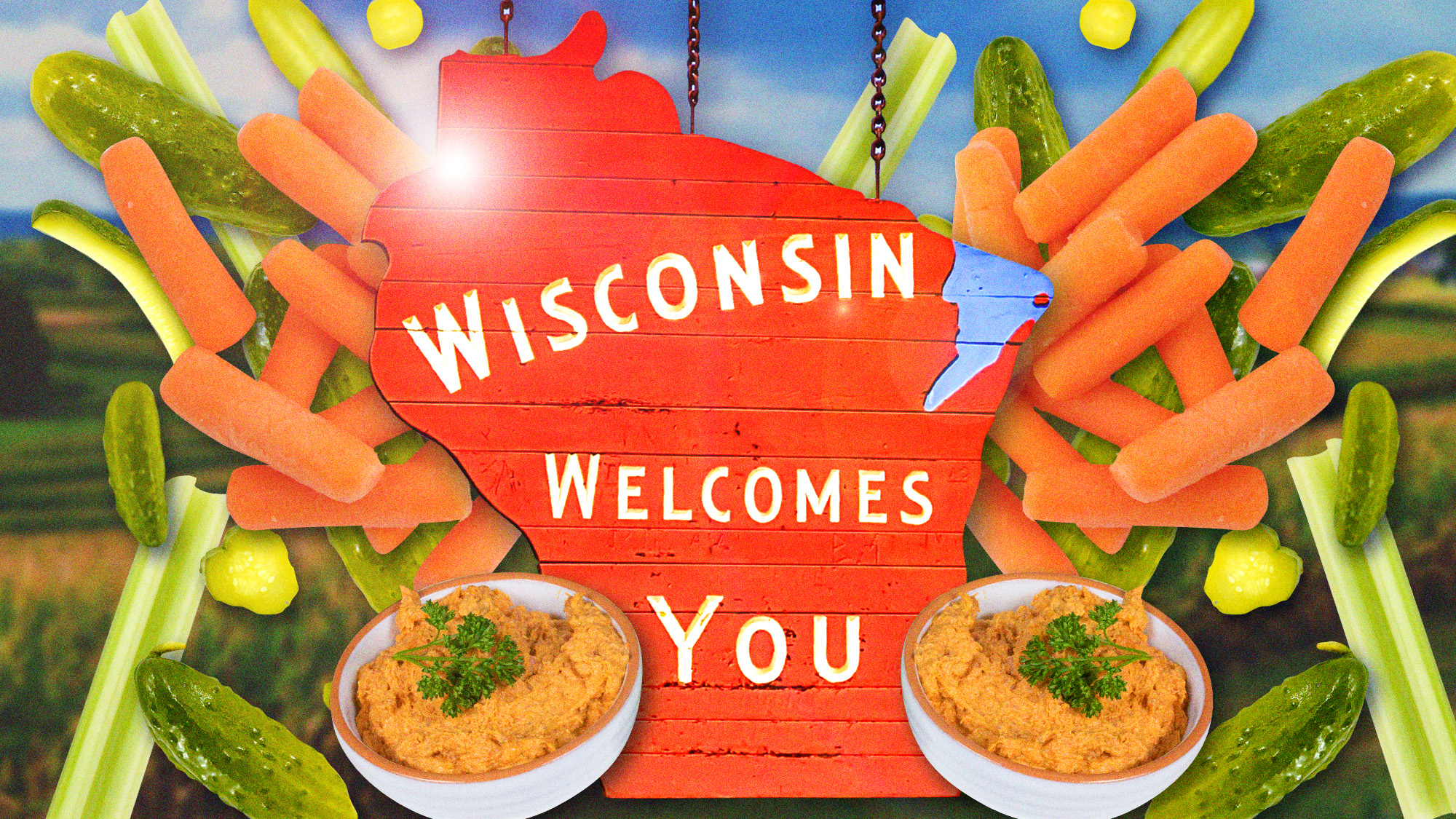When Midwesterners Go Fancy, They Pull Out The Relish Tray
Like many people who share my upper Midwestern heritage, I have a firm recall of different relish trays I've encountered throughout life. This is because when I was growing up, nearly every supper club meal or special house party had a relish tray. Here are the three most important that come to mind:
1. The Meyer family reunion, Mount Horeb, Wisconsin, 1993. Great-Aunt Gert prepared this spread, which included sweet pickles, black olives, carrots, and celery all served in a circular crystal dish with separate compartments for each item. The deviled eggs didn't have enough room on the primary tray, so they were annexed to a long metal platter. My grandma's side of the family was more gingham oilcloth than linen tablecloth. This was a tray put out and enjoyed by thrifty folks: nothing exorbitant or artisan, and certainly no meat. Nevertheless it was a special occasion, so there had to be a relish tray.
2. Thanksgiving, Elmwood, Illinois, 2007. My brother's in-laws from Marshfield, Wisconsin, came down for the meal. A few hours before the turkey, the in-laws prepared and served a relish tray on a petite compartmentalized three-tiered silver platter. This was a pickle-heavy rendition with cherry peppers and olives. The standout was pickled watermelon rind, an absolute revelation that could only come from the minds of people who had enjoyed relish trays for decades. Some of you might be wondering whether a relish tray is really necessary before one of the largest meals of the year. The short answer is yes.
3. Ray Radigan's restaurant, Kenosha, Wisconsin, 2003. My dad, stepmom, and I went out to celebrate Dad's birthday. Radigan's was a supper club, the kind of restaurant that gave you two meals (today's dinner and tomorrow's leftovers) for the price of one. Supper clubs have relish trays. Ergo, Radigan's had a relish tray. This tray sported carrot, celery, green onion, radish, olive, cold bean salad, and cottage cheese served atop a bed of crushed ice. This was all still complimentary in 2003. Soon after, Radigan's started charging for it. The restaurant sadly closed shop in 2015 after well over 80 years of fine dining, succumbing to the fate of so many other supper clubs, and thus so many other takes on the relish tray.
Relish trays are like snowflakes. No two are identical, and you see a lot of them up north. Still, as you can see from the three examples above, all share common bonds that identify them as relish trays and not something else like a plain crudite platter or a cold appetizer.
What are they? The first element is a pickled item, be it a beet, an olive, cucumber, egg, or even relish. This ties back to one of the basic definitions of relish according to Merriam-Webster: "a condiment eaten with food to add flavor."
At its most basic, the perfect relish tray would be just pickled items like chow chow or chutney, true by-the-book relishes. But more often than not you're going to see some raw veggies. Historically, these were limited by what's actually available to eat during certain times of the year in the Midwest. That's why carrots, radishes, onions, and preserved (pickled) items are so prevalent. But now that the world is flat, any veggie or pickle can make a cameo.
The second key element is the tray itself. You must have a fancy tray—and by fancy, I mean fancier than what you'd use for a weeknight meal. Optimally, this would be made of crystal, glass, steel, or sterling silver. Several nice cups or dishes with the vegetables arranged vertically is an acceptable alternative. The serving apparatus introduces a level of sophistication. Without it, you just have a pile of veggies.
And that's crucial to the third element, which is that the relish tray only makes an appearance on special occasions. This includes the domestic (family reunions or Thanksgiving dinners) as well as the commercial (a night out for a leisurely, three-hour dinner complete with cocktails). Again, your weeknight meal isn't cause for a relish tray.
The final element is the absence of a recipe. Beyond for the pickle, the actual tray, and special occasion, anything goes for relish trays. The perfect tray is an original creation by the host, leaning on what's worked in the past and which ingredients are available, as well as how many people are eating dinner and when it's going to be served. It's like jazz improvisation: As long as you obey the framework, and demonstrate that you know the framework, you're free to push the limits of creativity. This is why you can see anything from deviled eggs to pickled herring to cheese spread make appearances.
To summarize: if you have a fancy tray, some pickles, raw veggies (and whatever else you fancy), and a special occasion, you have yourself a relish tray. Regrettably, my most vivid relish tray memories all occurred years ago. The erosion of supper clubs means there's fewer opportunities to enjoy one at a restaurant (I've heard stories there are non-supper club restaurants that serve relish trays, but I have not yet encountered one). I don't see too many at parties anymore, and, candidly, we don't have an appropriate tray at home to present our own. Maybe it's time to take a trip up to Mount Horeb and get the family back together.
